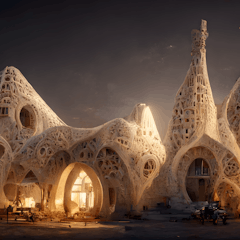
Articles on Architecture
Displaying 1 - 20 of 381 articles

Architectural models are an effective way of showing the public what new major buildings will look like.

Incorporating nature via biophilic design has interested architects and landscape architects for a long time, but its benefits for neurodiversity are not very well-known.

We could make our hot cities cooler with white roofs and light roads. But progress has been glacially slow.

The style was redefined by newly independent nations of the 20th century, who wanted to create an identity detached from their colonial past.

Women are underrepresented in architecture, occupying just 25% of jobs in the field. An architecture professor shares insights from her childhood on how those numbers can be turned around.

Following the tragic, devastating apartment block fire in Eastern Spain, questions are being asked about fire safety, and how it can keep pace with new technology and construction techniques.

The Middle Ages are often portrayed as dark and dirty. New research is revealing that it was, in fact, a period filled with light and colour.

Too often, signs of trouble are ignored until a problem becomes a crisis. Here are some clear warning signs residents should watch for.

Birds’ nest-building skills are informed by their environment and experiences, and nests can reflect the individual styles of their builders.

The UK government aims to enforce beauty through the planning system’s design codes. But intangible qualities like beauty are best achieved by challenging architects – not constraining them.

The best science is not always the best engineering when it comes to building codes. It’s also a problem across the US, as an engineer who works on disaster resilience explains.

An interview with a Syrian architect about domicide: the deliberate destruction of homes during war. Listen to The Conversation Weekly podcast.

In the mid-20th century, civil servants in Ireland recognised the harms incarceration wreaks not just on individuals but their families and society at large.

By adding stickers to glass walls and dimming lights, cities can be safer places for migrating birds.

French artists and intellectuals attempt to salvage the spirit of an era, as French government reveals plans to transform the country’s commercial zones.

Attitudes towards Kwame Nkrumah have shifted from veneration to confrontation and destruction and, finally, to more subtle forms of remembrance.

The 35 shortlisted structures from around the world showcase engineering ingenuity and big ideas for making construction more sustainable.

By bridging culture and computation, heritage algorithms challenge the myth of ‘primitive cultures’ and forge a new understanding of science and art.

There’s no excuse for colluding not to complete on fees, but the time-consuming and complicated bidding process for design work encourages it.

Air con uses lots of energy – try these things first.





